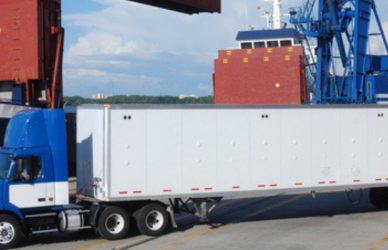Effective truck terminal management plays a vital role in optimizing operations and ensuring seamless transportation of goods. A well-organized and efficiently managed terminal can lead to increased productivity, reduced costs, and enhanced customer satisfaction.
Below, we’ll provide insights into three crucial elements that contribute to successful truck terminal management, helping businesses achieve operational excellence.
Advanced Technology Integration
In the fast-paced world of trucking, staying ahead requires embracing technology that streamlines processes and boosts productivity. Integrating advanced software solutions and systems can significantly enhance truck terminal management. Here’s how:
- Terminal Operating System (TOS)
A Terminal Operating System is the backbone of any efficient truck terminal. TOS provides real-time visibility into terminal activities, automates tasks, and optimizes resource allocation. This enables terminal managers to make data-driven decisions and adapt quickly to changing demands.
- Internet of Things (IoT) Devices
IoT devices can be strategically deployed across the terminal to collect and analyze data from various equipment and vehicles. This data-driven approach empowers terminal managers to identify inefficiencies, track assets, and predict maintenance needs accurately.
- Fleet Management Software
Integrating fleet management software enables better route planning, fuel optimization, and asset tracking. Real-time communication with drivers enhances coordination and helps tackle unexpected disruptions promptly.
Emphasis on Workforce Development
While technology is vital, a well-trained and motivated workforce is equally crucial for efficient truck terminal management. Investing in employee development yields numerous benefits. Below are a few ways you can achieve this:
- Training Programs
Implement comprehensive training programs to equip terminal staff with the necessary skills and knowledge. Regular workshops on new technologies, safety protocols, and customer service foster a culture of continuous learning and improvement.
- Safety First
Prioritize safety at the terminal. Conduct routine safety drills, maintain well-marked walkways, and enforce adherence to safety guidelines. A safe working environment reduces accidents and mitigates downtime.
- Employee Recognition
Recognizing and rewarding outstanding performance fosters employee morale and commitment. An engaged and satisfied workforce is more likely to contribute positively to terminal operations.
Data-Driven Decision Making
Data is a powerful asset when it comes to optimizing truck terminal management. Utilize data analytics to gain insights into operational patterns and identify areas for improvement. Here’s how:
- Key Performance Indicators (KPIs)
Define and track KPIs, such as truck turnaround time, terminal utilization, and dock efficiency. Regularly reviewing KPIs helps monitor performance and identify trends that impact productivity.
- Predictive Analytics
Leverage predictive analytics to anticipate demand fluctuations, equipment maintenance needs, and potential bottlenecks. Proactive planning minimizes downtime and enhances overall efficiency.
- Continuous Improvement
Encourage a culture of continuous improvement at the terminal. Analyze data regularly, identify pain points, and implement solutions. Involving employees in this process fosters a sense of ownership and encourages innovative ideas.
Optimizing truck terminal management is vital for businesses seeking to excel in the dynamic logistics industry. By integrating these tips, terminal managers can achieve efficiency and proficiency, ultimately leading to enhanced productivity, reduced costs, and increased customer satisfaction. As the trucking landscape continues to evolve, adapting and embracing these essential elements will undoubtedly contribute to long-term success and growth in the truck terminal management domain.











